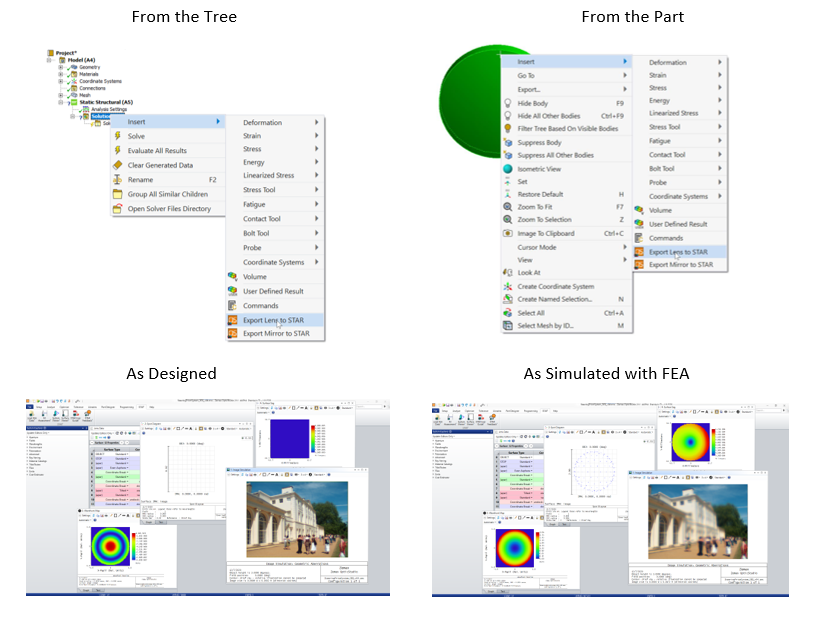HUD or Head Up Displays are a form of AR/VR technology (Augmented Reality / Virtual Reality). This has been a disruptive technology from its inception. A technology that began in the aerospace and defense industry, has since permeated commercial aircraft, automotive, heavy construction equipment, consumer electronics and many more. As this technology reaches more real-world applications, we need to consider the impact environment has on the optical elements in these systems. When temperature and pressure change, the housing holding the optics change, placing external forces on those optics, plus the temperature and pressure can provide a direct source of deformation to the optical system. The OpticStudio STAR Module allows FEA data about structural and thermal changes to the optical elements to be imported to OpticStudio and then analyze the results using the same analytic tools used to design the system.
The top tech tip this Tuesday, there is now a script for Ansys Workbench that facilitates an automated export of the FEA data in a form that the OpticStudio STAR Module requires. While the OpticStudio STAR Module is FEA agnostic and can import a text file formatted correctly from other tools as well, this extension for Ansys Workbench saves time and reduces human error. Once the extension is installed the export can be accomplished in one of two ways, either from the object or from the tree. Once the FEA data is imported to the file, the FEA data can be applied and contrasted to the nominal design using the same analytic metrics used to design the system in sequential mode. Also note; the FEA data can be non-uniform in nature, which is extremely helpful when working with complex systems, such as HUD and AR/VR systems.

Additional resources:
Product Demonstration: OpticStudio STAR Module http://ow.ly/GPkM50GOkVK
Blog: Which tools to use when working on a Head-up-Display http://ow.ly/shlW50GOkVJ
Webinar: Straylight analysis for head up display http://ow.ly/z8h150GOkVL


